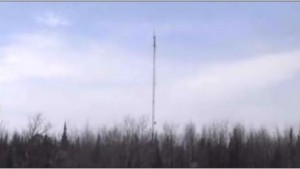The Minnesota Court of Appeals reversed a lower court ruling barring construction of a 450-foot cell-tower atop a 150-foot ridge at the edge of the Boundary Waters Wilderness.

The Duluth News-Tribune has an Associated Press story on the ruling HERE. The ruling itself can be found HERE.
AT&T Mobility proposed building the 45-story tower on a ridge near Fall Lake, just outside of the Boundary Waters Canoe Area Wilderness near Ely. The company said the tower was the best means of expanding service to people living east of Ely and for visitors to the BWCAW.
The advocacy group Friends of the Boundary Waters Wilderness brought the suit claiming the tower would violate the Minnesota Environmental Rights Act. The group claimed the flashing lights on the tower would be visible from several lakes and waterways in the wilderness area.
Last summer, District Court Judge Philip Bush barred construction of tower, saying the tower and its lights would “impair the scenic view and aesthetic resources of the BWCAW.”
The three-judge panel reversed Bush’s decision saying “the district court erred in concluding that the proposed tower would have a materially adverse effect on the environment.” At issue were aspects of MERA, which allows private citizens to sue to protect the state’s natural resources.
The Friends of the Boundary Water Wilderness Executive Director Paul Danicic said in a statement that his group was disappointed in the court’s ruling.
“We will review the ruling carefully before deciding our next legal steps,” he said. “Our organization is undeterred, and we will continue to work vigorously to protect the scenic and aesthetic resources of the Boundary Waters.”

